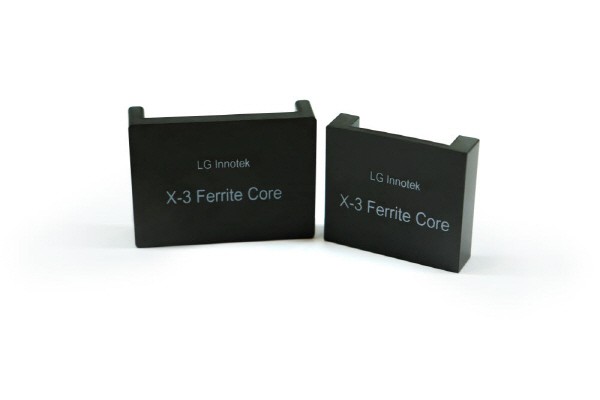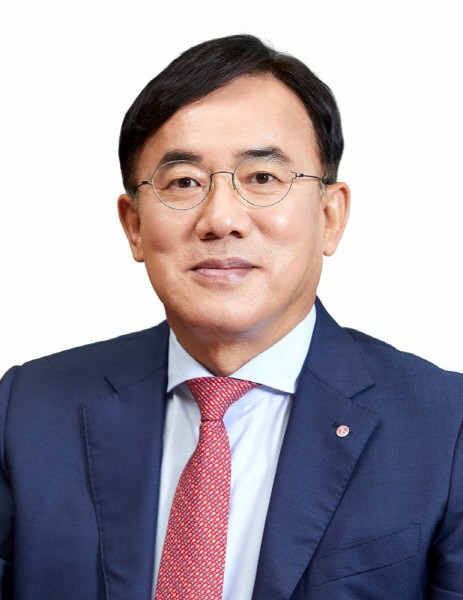Developed 'Ultra-Low Loss Ferrite X-3'
Used for vehicle DC-DC converters, etc.
All climate from -40 to 150 degrees below zero
Minimized thermal damage… Increased energy efficiency
Compared to compe
LG Innotek has developed a magnetic material that greatly improves energy efficiency and integrates world-class technology. Magnetic materials are a key material used in vehicle DC-DC converters and vehicle battery chargers. Demand has increased significantly in recent years, especially in the automobile industry.
LG Innotek succeeded in developing ultra-low loss ferrite X-3. Ferrite is a magnetic material whose main raw material is iron oxide. It plays a role in changing voltages or eliminating unnecessary signal generated by current waves.
Previously, LG Innotek garnered attention when they developed ferrite (X-2) in 2020. By developing the X-3, which reduced energy loss by 30% and lowered heating temperatures by 4 degrees, it managed to secure the world's best source technology for ferrite materials.
Ferrite is in the spotlight as a key material for electronic components. This is because, unlike general electronic devices, automobiles are inevitably exposed to extreme cold and heat conditions. Energy loss of electronic components is inevitable as the external temperature increases. An increase in energy loss in magnetic components is the biggest cause, except for power semiconductors. To minimize this, magnetic components require ferrite that is durable and has low energy loss at high temperatures. By reducing the amount of energy loss and heat generation, energy efficiency can be increased and the damage caused by heat can be minimized, thereby extending the half-life of parts.

The magnetic material developed by LG Innotek stably implements the highest performance in all temperature ranges to which vehicle can be exposed to, from -40 to 150 degrees.
The X-3 can also help reduce the size of vehicle parts. By applying X-3, the size of vehicle parts can be reduced by up to 30%, compared to competing materials, while maintaining the same performance. This allows automakers more room to add high-performance parts, since space is secured through the miniaturization of parts. This allows for more upgraded electric vehicles to be introduced compared to before.
LG Innotek achieved this development in just two years. This is thanks to their digital transformation and artificial intelligence-based material performance prediction technology. It usually takes more than seven years to develop such an ultra-low loss ferrite. This is because existing methods require thousands of repeated experiments until an optimal material composition ratio is found.
LG Innotek significantly shortened the development period by increasing the number of cases that can be verified through AI grafting, and reducing the number of unnecessary experiments. The number of errors between experimenters is reduced and the accuracy of the experiments is also improved.

LG Innotek plans on commercializing the X-3 from the first half of 2024. Parts previously applied with the X-2 will also be replaced with the X-3. The company is speeding up their efforts to acquire additional global customers by conducting promotions for finished cars and vehicle parts makers.
LG Innotek has secured around 120 patents related to magnetic materials and parts to cement its position as the world's leader in ultra-low loss ferrite. It plans on applying for a sustainable strategy patent. It will also expand investment in advance development of innovative materials.
Min-seok Kang, Chief Technology Officer (CTO) of LG Innotek, said, "Ultra-low-loss ferrite is a successful example of introducing the world's best-performing products in a short period of time through digital transformation of the R&D process," adding, “We will continue to secure source technologies for core materials to innovate customer experiences in the future."
[Glossary] Ferrite: A magnetic material whose main raw material is iron oxide. It plays a role in changing voltages or eliminating unnecessary signal generated by current waves. It is a core material used in vehicle DC-DC converters and vehicle battery chargers (On Board Charge, OBC). Demand is increasing mainly in the auto industry, which is expanding its hybrid and electric vehicle (EV) lineups.
By Staff Reporter So-ra Park srpark@etnews.com